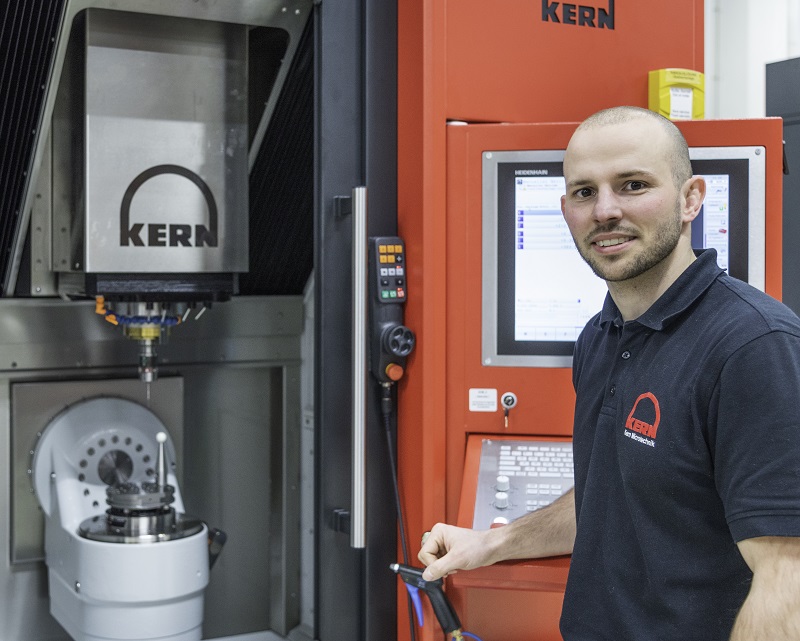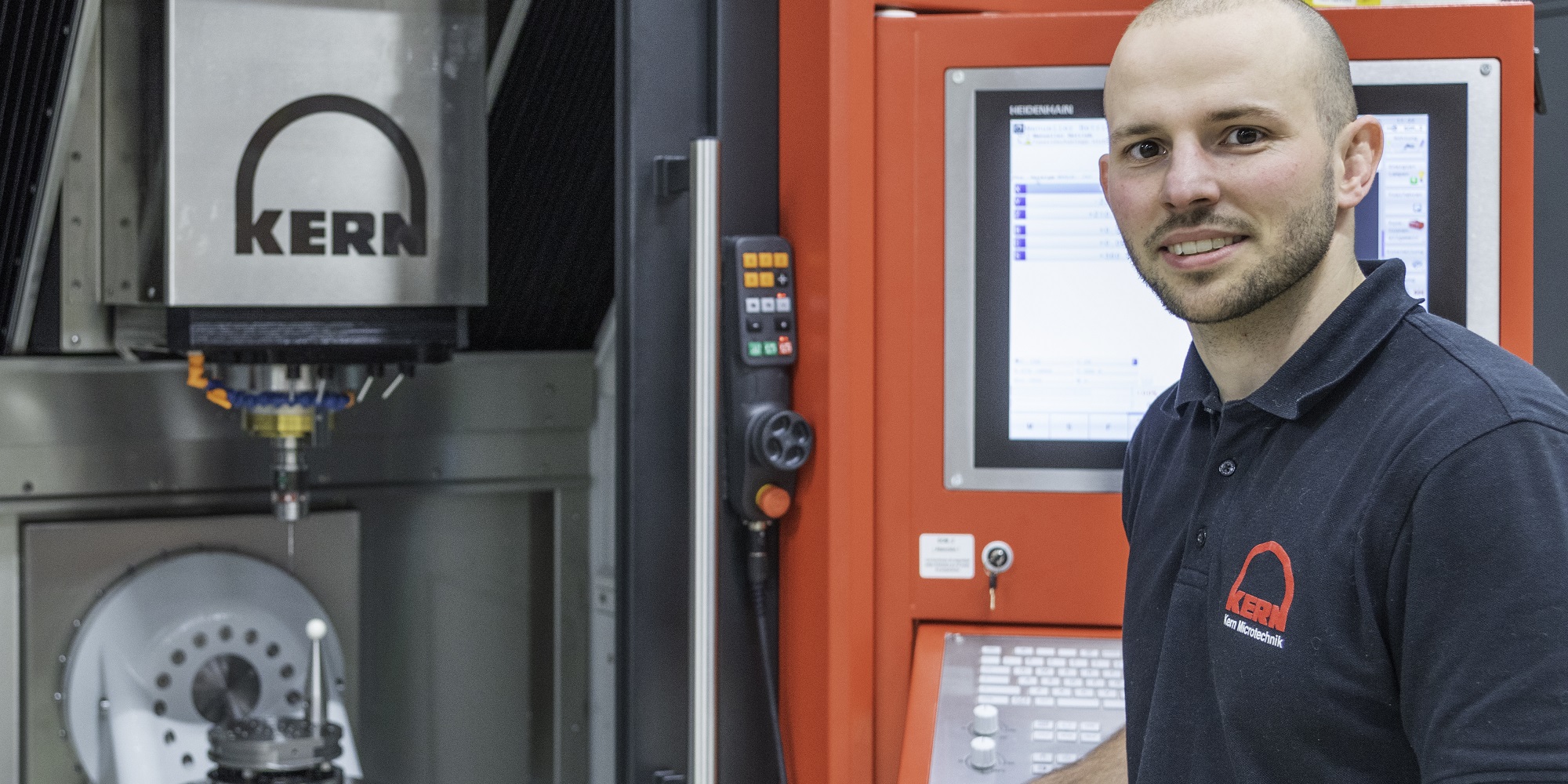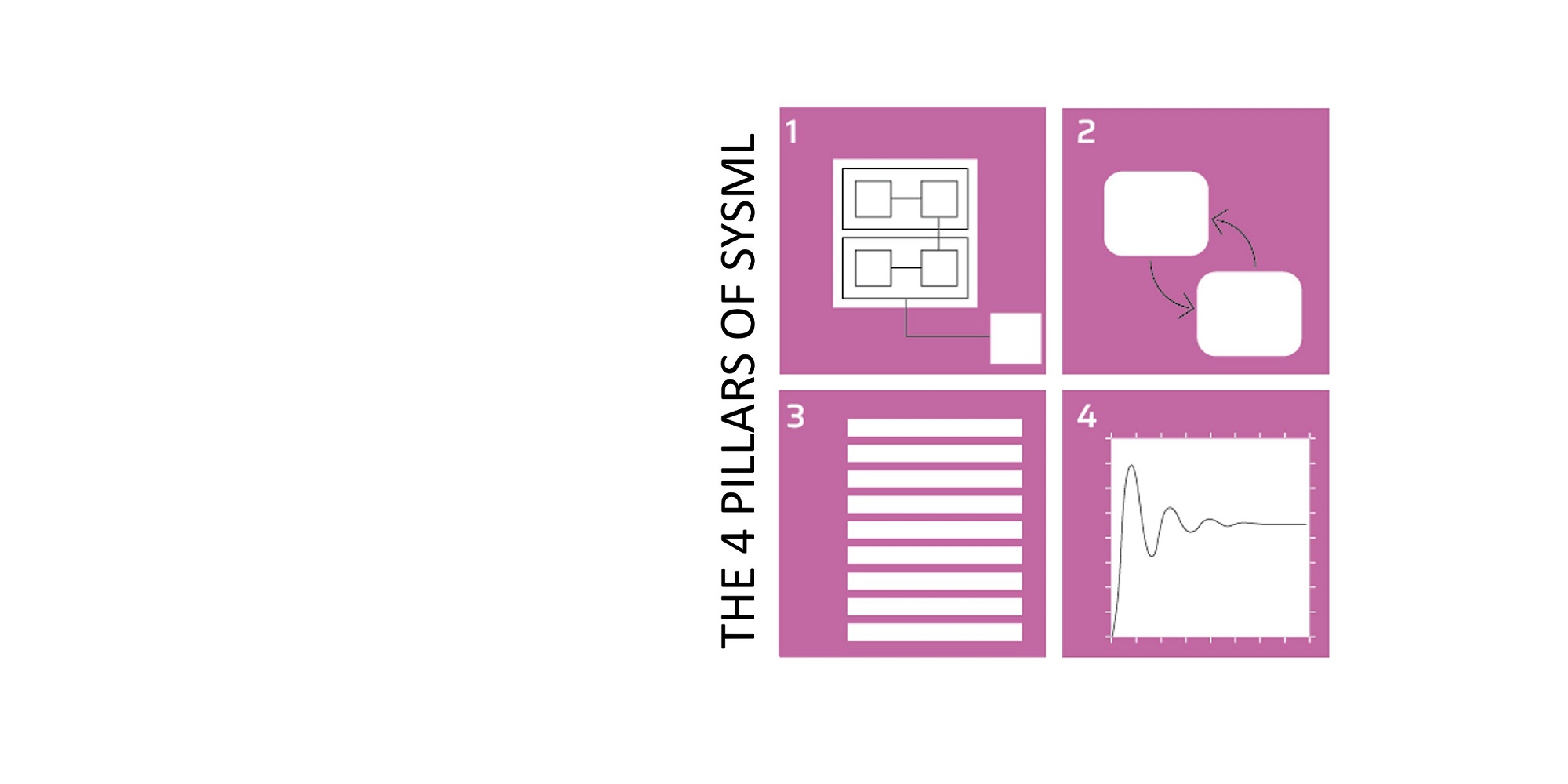Making ultra-precise milling machines even more precise is how one could describe Tim Knobloch’s job. Thermal effects play an increasing role in his field. He therefore attended the ‘Thermal effects in mechatronic systems‘ training.
Kern Microtechnik GmbH has been building ultra-precise CNC machines in the southern German state of Bavaria for more than sixty years. They do this with over 250 people, spread all over the world. For the German specialist, precision is more important than ever.
Kern supplies precision production at the top market segment of accuracy. Customers are producers in the watch industry, medical technology and semiconductor mechanical engineering.
Within the Kern Micro platform, we develop different machine versions. “We use hydrostatic bearings, with very low friction,” says Tim Knobloch, precision engineer at Kern Microtechnik. Where you usually see streaks on milled parts from standard CNC machines, the surfaces of workpieces from Kern’s machines have mirror-quality. The machines can mill parts up to roughly 50 kilograms with diameters of up to 350 millimeters. ‘Usual is 200 millimeters.’
Precision engineer
Knobloch is a precision engineer, but his main focus is systems engineering for precision. ‘I look at quality challenges. Our machines have to meet very high standards. That’s why we test intensively to detect and correct problems.’
That makes Knobloch’s job very broad. ‘At Kern, my precision engineering colleagues and I work more or less as project engineers. We are working in many fields like mechanical construction, software programming, experimental testing along the problem solving process.’
We look at a problem or issue from many angles, looking at the whole process. We do design and modeling first, then prototyping and testing, and then continue with to the actual development and integration into the platform. Mechanical, software and electrical engineers work side-by-side in this process.’

Tim Knobloch of Kern Microtechnik works on milling machines that machine ultra-precise, whether they are in a clean room or in an unconditioned space. Photo Kern Microtechnik.
Thermal effects
Along with a colleague, Knobloch took the training course Thermal effects in mechatronic systems at High Tech Institute. That decision resulted from Kern’s goal of making it’s machines as precise as possible while minimizing errors. Nowadays, in general, thermal effects are the cause of about 40 percent of the total error of a general machine tool like a milling machine. I am talking about the total error of the machine tool, the geometric error on the workpiece after processing like milling or grinding. That’s really substantial. Every part can be affected by it. Because we at Kern put a lot of effort in the cooling of the machine, we may be better than 40 percent, although, I can’t give you an exact number.
Sometimes a machine from Kern ends up in a university, where it is used in a clean room with good climate control. But with other customers, such a machine can end up in a somewhat more uncontrolled production environment, with strong temperature variations. To still be able to machine precisely in those unpredictable environments, Kern builds speciallized parts for it’s machines, such as heat exchangers. Here, too, knowledge of thermal effects comes in handy. ‘That’s an important subject, because we use oil under high pressure. Such an exchanger is a part you can’t just buy from another company. Among other things, I was interested to see how you can model a heat exchanger without very long compute times.’
Netherlands leads the way
Germany, of course, is known as a country of mechanical engineering. But according to Knobloch, it is no coincidence that he did this training in the Netherlands, and not in his home country. ‘The Netherlands and the United Kingdom are further ahead than Germany in precision engineering. There are smaller modules or courses you can take at universities, but you can’t really learn it properly. My boss, the head of development at Kern, happened to work at Philips before. That’s how we knew about the existence of High Tech Institute.’
Efficient model
An important aspect of the training was the mapping of thermal effects and thermal modeling methods. In the training, participants learn to use so called lumped mass modeling to gain a good understanding. This method roughly allows you to model the essence through masses – in thermal context: the thermal capacities – and the heat exchange between the different parts. In the conceptual phase, this is a very effective tool, because if you don’t yet have a fully worked-out CAD model with all the details, you can’t create a detailed FEM model at all.
Knobloch: ‘We learned to model much more efficiently with this than with finite element methods. FEM calculations take a long time. I myself always spend a lot of time with them. Lump mass modeling is often much more efficient. Simply put, the advantage is that you have to think better about your system, about how to reduce it to its essence. So you get a better understanding of your model, and whether there’s something wrong with it.’
''I learned a lot of new things about heat exchange and how to model it.''
Knobloch was familiar with Lumped mass modeling. It is one of the basic modeling techniques he learned at university. The Lumped capacity modeling in the course however, was tailored to his level and interest. ‘I had read about it, but never actually tried it. I also was never able to take a course around heat exchange in college. So that part of the subject was new to me. It wasn’t difficult for me, because I have basic thermodynamic knowledge. But I learned a lot of new things about heat exchange and how to model it.
Knobloch says knowledge of thermal effects also helps Kern with his most essential work. Much of the effort in manufacturing at the company is in making a machine fingerprint after assembly. Says Knobloch, “We characterize the machine, and compensate for the errors that are still in it.”
Not crazy
Knobloch on the trainers: ‘I advised my colleagues to participate in the training as well. The trainers were very good. They didn’t just teach, but started from their own practical experiences. They connected those insights to your own background and situation. They not only explained, but also showed how to do it. It was like talking to a colleague, not a professor at the university.’
Knobloch also enjoyed the interaction with other trainees. ‘With that, it became clear to me that my problems were also at play in many other companies. For example, there were people from ASML and Zeiss present. They, of course, specialize in semiconductors or optics, but it was very interesting to see what problems they were running into.’ He laughs: ‘Sometimes our problems seemed small compared to theirs.’
''It's reassuring to know that others are struggling with the same problems.''
A bond was also formed. ‘When we talk to our suppliers and have specific requirements for parts, sometimes they declare us crazy. Sometimes they say it’s just not available. At the training I heard from other participants that this happens to them regularly as well. It was nice to be confirmed that we at Kern are not crazy, ha ha. It’s reassuring to know that others are struggling with the same problems.’
This article is written by Tom Cassauwers, tech editor for High-Tech Systems.
Recommendation by former participants
By the end of the training participants are asked to fill out an evaluation form. To the question: 'Would you recommend this training to others?' they responded with a 8.9 out of 10.







